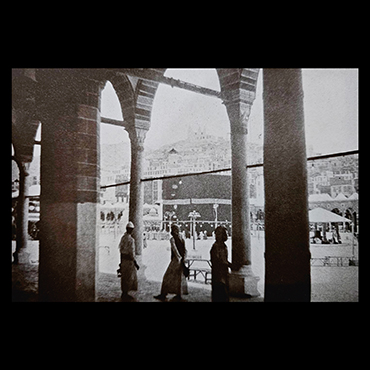These Abbasid-era columns once formed part of the porticoes encircling the mataf—the courtyard surrounding the Ka‘bah within the Masjid al–Haram. Remarkably, these columns stood within this sacred precinct for over 1,200 years as enduring witnesses to centuries of faith and pilgrimage.
Construction of the first porticoes around the Ka‘bah is credited to the third of the Rightly-Guided Caliphs, ‘Uthman bin ‘Affan (r. AH 23–35/644–56 CE). The columns on display likely date from two significant expansions of the Haram initiated by the Abbasid Caliph Al-Mahdi (r. AH 158–69/775–85 CE).
During these expansions, Al-Mahdi had marble columns transported by land and sea from Egypt and Syria to the port of al-Shu‘abah near Jeddah, and from there conveyed by cart to Makkah al-Mukarramah. Although Al-Mahdi passed away before the work was finished, his successor Al-Hadi (r. AH 169–70/785–86 CE) ensured the project’s completion during his brief reign.
The porticoes underwent restoration under the Mamluk sultan Al-Nasir Faraj (r. AH 801–15/1399–1412 CE) in AH 803/1400–01 CE, who added marble capitals and connected the columns with arches. These columns continued to be re-used in later renovations, including the notable restoration by Sultan Selim II (r. AH 974–82/1566–74 CE) in AH 979/1571–72 CE.
During the expansion of the Sacred Mosque in AH 1432/2011 CE, several of the Ottoman-era porticoes were altered, and the columns displayed here removed.
Columns from the Haram Mosque
Haram al-Sharif in Makkah al-Mukarramah, Saudi Arabia
Reign of the Abbasid Caliph Al-Mahdi (r. AH 158–69/775–85 CE)
Prokonnesian marble
Height range: 285–344 cm; Diameter range: 41–46 cm
Ministry of Finance, Saudi Arabia

